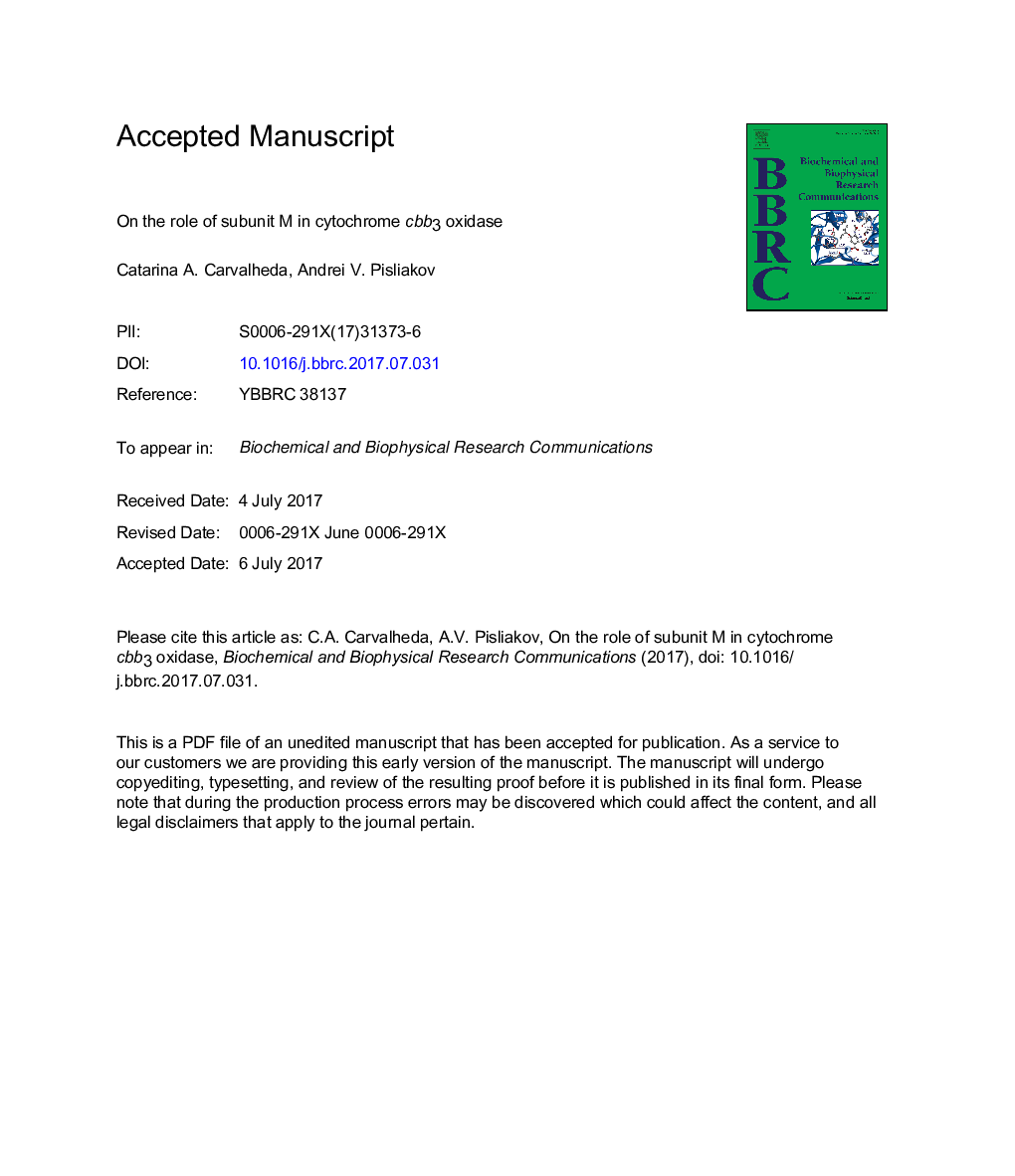| Article ID | Journal | Published Year | Pages | File Type |
|---|---|---|---|---|
| 5504796 | Biochemical and Biophysical Research Communications | 2017 | 22 Pages |
Abstract
Cytochrome cbb3 (or C-type) oxidases are a highly divergent group and the least studied members of the heme-copper oxidases (HCOs) superfamily. HCOs couple the reduction of oxygen at the end of the respiratory chain to the active proton translocation across the membrane, contributing to establishment of an electrochemical gradient essential for ATP synthesis. Cbb3 oxidases exhibit unique structural and functional features and have an essential role in the metabolism of many clinically relevant human pathogens. Such characteristics make them a promising therapeutic target. Three subunits, N, O and P, comprise the core cbb3 complex, with N, the catalytic subunit, being highly conserved among all members of the HCO superfamily, including the A-type (aa3, mitochondrial-like) oxidases. An additional fourth subunit containing a single transmembrane (TM) helix was present in the first crystal structure of cbb3. This TM segment was recently proposed to be part of a novel protein CcoM, which was shown to have a putative role in the complex stability and assembly. In this work, we performed large-scale all-atom molecular dynamics simulations of the CcoNOPM complex to further characterize the interactions between subunit M and the core subunits and to determine whether the presence of the fourth subunit influences the water/proton channels previously described for the core complex. The previously proposed putative CcoNOPH complex is also assessed, and the potential functional redundancy of CcoM and CcoQ is discussed.
Keywords
Related Topics
Life Sciences
Biochemistry, Genetics and Molecular Biology
Biochemistry
Authors
Catarina A. Carvalheda, Andrei V. Pisliakov,
